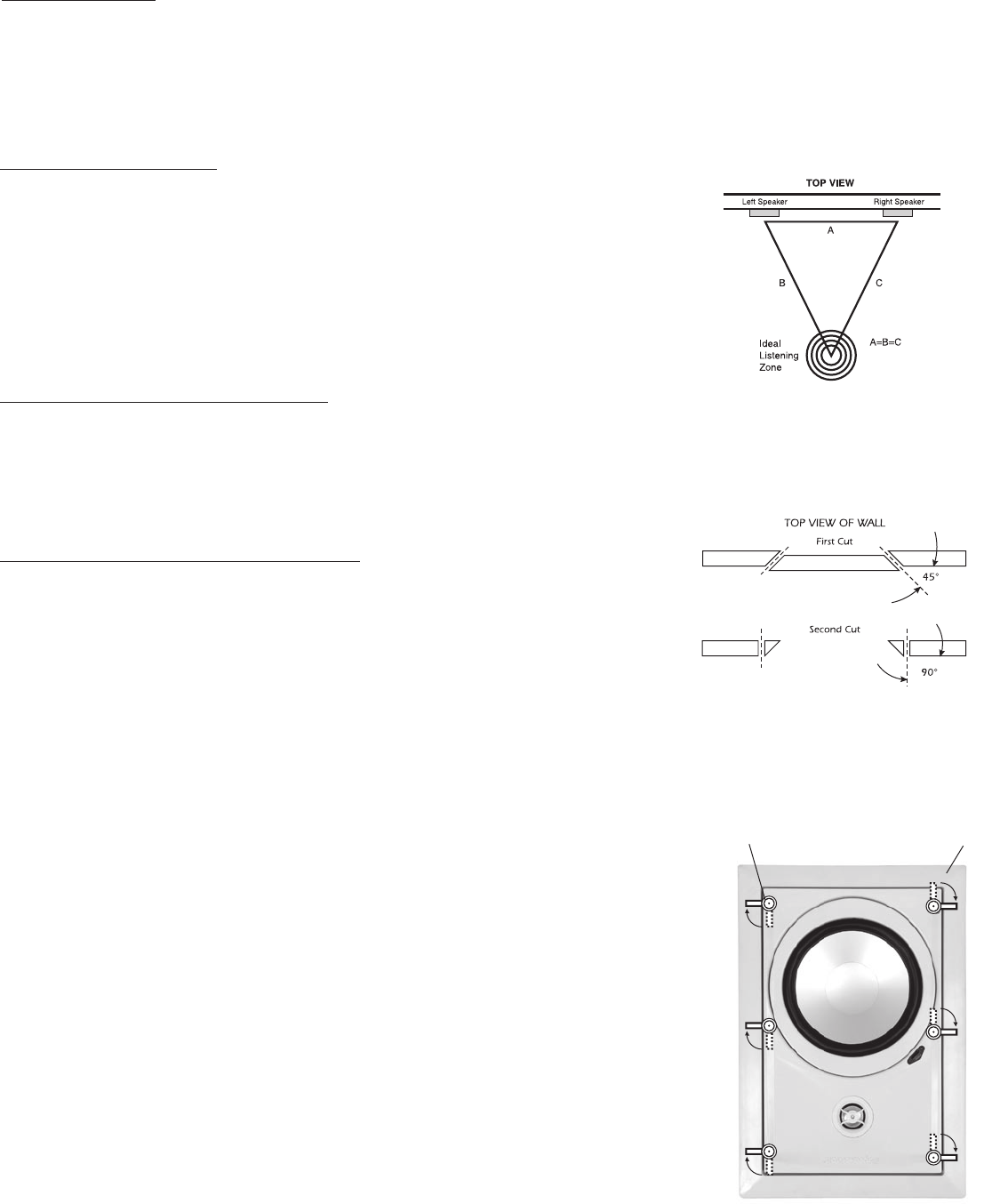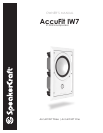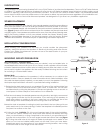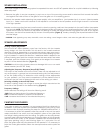
Figure 2
Mounting Feet Flange
Figure 3
Figure 1
SPEAKER PLACEMENT
Best results are achieved when the left, right channel speakers are all the same distance
away from the listener. The front left and right speakers should be placed so that they
form an equilateral triangle, with the listener at one point and each speaker at the other
two. (Figure 1) Ideal sound will be achieved when the tweeters are placed at ear level
or slightly higher. If the speakers are positioned far away from the primary listening area,
adjust the pivoting tweeters so they are pointed toward the primary listening area.
NOTE: To avoid possible damage to the pivoting tweeters, read the section entitled
“SPEAKER ADJUSTMENTS” in this manual prior to performing the tweeter adjustment.
INSTALLATION CONSIDERATIONS
Before installing your speakers into the wall, you should consider the placement
carefully, taking into account the location of electrical, plumbing and other fixtures.
Contact your dealer for assistance if you are not sure of the best location in your par-
ticular room environment.
MOUNTING SURFACE PREPARATION
New Construction – Unfinished Walls
A New Construction Bracket (available from your dealer), may be installed prior to
drywall application across studs (up to 24" on-center) where a speaker will be located.
Insulation material should be in place prior to installing drywall. After the hole is cut and
the drywall is installed, the speakers are then easily installed following the instructions
for mounting in “Finished Walls” below.
Finished Walls
Prior to the actual installation of the speakers, it will be necessary to run cables to the
speaker locations. See your dealer for more information about cable installation. After
the cable has been properly installed, you are ready to mount the speakers. Following
the simple steps listed below will result in a professional looking installation:
1. Determine the best area to mount your speakers. This area of the wall should be free
of obstructions such as electrical conduit, HVAC ducts, or water lines. This can best
be determined by noting the placement of fixtures and gaining access to an attic or
crawl space for further analysis of the location of such obstacles.
2. Find the studs nearest the desired speaker mounting location. We highly recommend
using a good stud-finder tool for this procedure. If you are lining up the speakers to
some other object or molding in the room, make sure you consider the size of the
baffle flange which extends beyond the mounting hole on all four sides.
3. Mark the hole. A template for setting the hole is provided in the box (along with one
paint mask insert for use when painting). Position the template in the desired position
and pencil an outline on the wall.
4. Cutting the hole. CAUTION: This is the most important part of the entire installation.
If you are not certain whether any obstructions exist behind the desired mounting
area, you should start by cutting a small hole in the center of your penciled mount-
ing hole with a drywall saw. Cut at a 45º angle towards the inside of the hole (Figure
2). Cutting the small hole at this angle will make drywall repair much easier as the
piece cut out can be installed neatly back into the hole. Once you have deter-
mined there aren’t any obstructions in your desired mounting location, start cutting
the finished hole at a 90º angle to the wall surface.
INTRODUCTION
Congratulations on purchasing SpeakerCraft’s AccuFit IW7 Series of architectural loudspeakers. The AccuFit IW7 Series features
sa shallow 2
3
⁄4" sealed steel enclosure. Speakercraft offers the AccuFit Series to address space limitations, building codes, sound
transfer to adjoining walls and living environment concerns. The AccuFit IW7 Series of shallow depth, fully enclosed speakers
ensure that the drivers have the proper amount of air space to deliver the best performance regardless of the installation envi-
ronment. This new line of technical advanced speakers was designed to fit just about any installation application.
1






